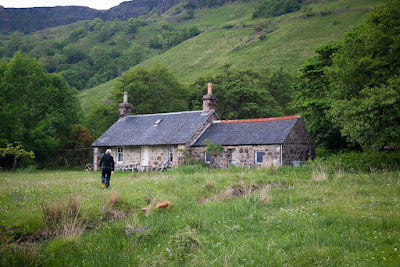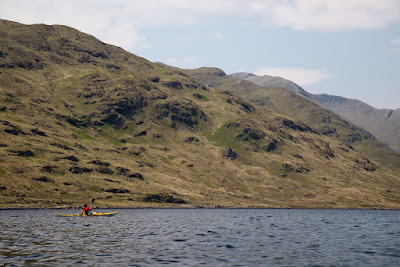...until we approached Rubha an Ridire...
...which marked the turning point of our route.
We now ran before the light wind, to the NW, up the Sound of Mull which separates the Island of Mull from the SW coast of Morvern.
It was getting late when we finally arrived at a curving beach at the end of our day.
The sun was setting as we prepared our evening meal on the shore.
Unfortunately as the sun went down, the midges unleashed their attack. David was fine in his jacket but Phil had forgotten his in the rush to pack. Not even a fine malt was able to fully restore Phil's equilibrium.
...as a potential sleeping quarters. It was clean enough but someone had left some food and some well fed mice had pooed and peed everywhere. It did not smell too fresh so we decided to settle...
for camping on the bluebell meadow outside.














































